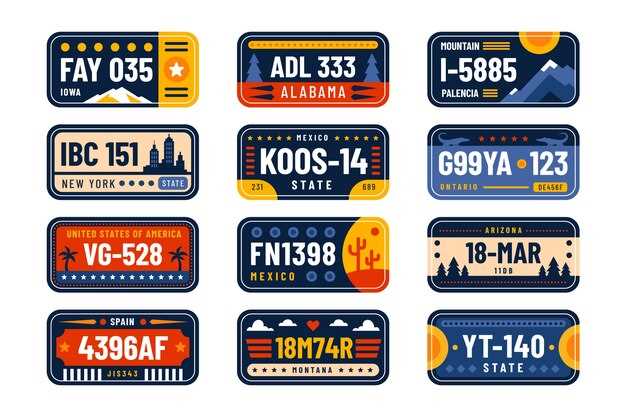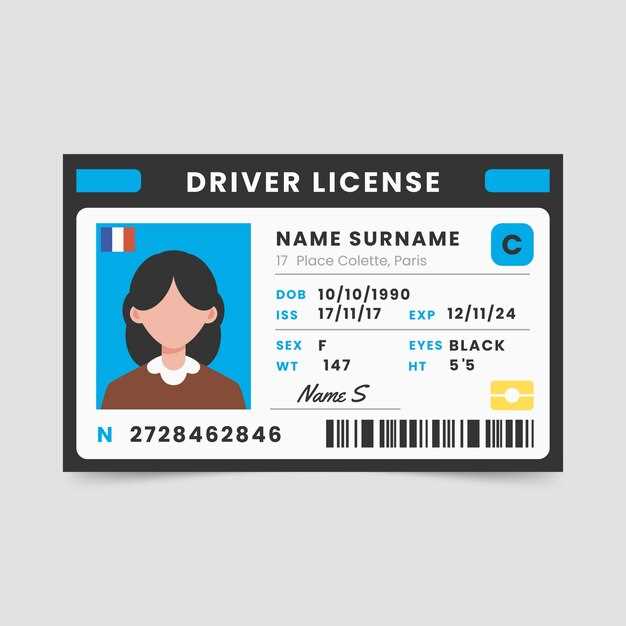
European license plates serve as more than just vehicle identification; they embody the intricate tapestry of regulations, design, and identity across different nations. Each plate reflects the unique character and organizational framework of the issuing country, showcasing its cultural, legal, and economic context. As a unifying element among diverse nations, these plates also play a crucial role in facilitating cross-border movement and trade, while adhering to established standards.
In the European Union, the license plate system is designed not only to ensure uniformity but also to enhance safety and security on the roads. The standardization of license plates aids in the easy recognition of vehicles, thus contributing to crime prevention and the efficient functioning of law enforcement. The design elements, including country codes and specific regional identifiers, create a cohesive visual representation that fosters a sense of belonging and pride among drivers.
Furthermore, European license plates are indicative of broader socio-political dynamics. They highlight issues related to sustainability, environmental protection, and the compatibility of regulations across member states. Understanding the significance of these plates allows for deeper insights into the complex web of motor vehicle governance in Europe, shedding light on how these seemingly simple objects play a pivotal role in maintaining order and facilitating interaction within the continent.
Regulatory Framework Surrounding European License Plates
The regulatory framework governing European license plates is primarily influenced by the European Union’s directives and national legislation of individual member states. Each country has specific regulations that dictate the design, dimensions, and use of license plates. However, a degree of harmonization exists within the EU to facilitate cross-border vehicle registration and ensure uniformity.
At the EU level, the key legislative acts include Directive 1999/37/EC, which outlines the registration of motor vehicles, and Regulation (EU) 2018/858, which addresses vehicle type approval. These regulations emphasize the need for clear identification of vehicles and the importance of standardizing certain features, such as the alphanumeric sequence and the use of symbols on plates.
Member states have the authority to implement additional rules tailored to their national context. For instance, many countries feature unique identification codes that signify the region or city of registration. Moreover, specific security measures, such as holograms or QR codes, may be mandated to prevent forgery and enhance vehicle traceability.
Design elements are also regulated, including size and color schemes. Most European countries utilize a rectangular format with a white background and black characters, although variations exist. The European Union emblem, consisting of a circle of stars, is prominently displayed on license plates of all member states, reinforcing a sense of unity and identity.
Enforcement of these regulations plays a critical role in ensuring compliance, with penalties imposed for illicit modifications or improper display of license plates. Consequently, proper knowledge of the regulatory framework is essential for vehicle owners to avoid legal issues while driving within and across European borders.
Interpreting License Plate Codes: Country and Region Identification

License plates across Europe feature distinct codes that play a crucial role in identifying the country and region of registration. Each vehicle’s registration plate begins with a set of letters that indicate the issuing country, followed by various numbers and letters that provide additional details about the vehicle.
For example, the first one or two letters on a license plate signify the country. Germany uses ‘D’ for Deutschland, while France uses ‘F’ for France. This alphabetic code is standardized across Europe and can typically be found at the top of the plate. The subsequent characters often represent the specific region or district within that country, further refining the identification process.
In Germany, the license plate may start with ‘B’ for Berlin, ‘M’ for Munich, and so forth. The regional codes are essential for tracking compliance with local laws and regulations. Similarly, in Italy, plates might start with ‘RM’ for Rome, helping facilitate regional identification.
Additionally, the European Union has introduced a unique system where the blue band on the left edge of the plate displays the national flag and the country code, enhancing instant recognizability on an international scale. This feature is especially important in a region that sees extensive cross-border travel.
Understanding these codes is not only vital for law enforcement and vehicle registration authorities but also beneficial for residents and tourists. Recognizing the country and region codes can aid in identifying the origin of vehicles, which is particularly useful in traffic monitoring, as well as in contexts such as insurance and vehicle sales.
In summary, interpreting license plate codes involves more than just reading letters and numbers; it requires knowledge of regional codes and standard practices. This system ensures efficient identification and regulation of vehicles across diverse European nations.
Practical Implications of License Plate Formats for International Travel

Understanding the formats of European license plates is essential for international travelers, as these plates serve not only as identification but also facilitate navigation and compliance with local regulations. The diversity in design and structure across different countries can lead to both practical advantages and challenges.
-
Identification and Recognition:
European license plates often contain country codes that are crucial for quick identification. For example, a plate with ‘F’ signifies France, while ‘D’ represents Germany. This recognition aids travelers in understanding which vehicles are from which countries during cross-border driving.
-
Understanding Regulations:
Each country has specific road regulations that can vary based on license plate formats. Travelers should familiarize themselves with the local laws regarding vehicle identification to avoid fines or legal issues.
-
Insurance and Legal Issues:
Different countries have varying insurance requirements that can affect cross-border travel. For example, some countries require additional insurance for vehicles with foreign plates. Understanding the implications of plate formats helps in ensuring compliance and avoiding breaches of local laws.
-
Navigation Systems:
Modern GPS systems often utilize license plate formats for traffic data analysis and road management. Travelers must ensure their navigation tools are updated to recognize the local formats for efficient routing.
-
Parking Regulations:
Parking fees and regulations may be influenced by vehicle registration numbers. Travelers should investigate how foreign plates are treated in different regions to avoid fines or towing.
In conclusion, having a thorough understanding of the license plate formats across Europe is crucial for international travelers. This knowledge facilitates compliance with regional laws, enhances navigation, and ensures a smoother travel experience.
